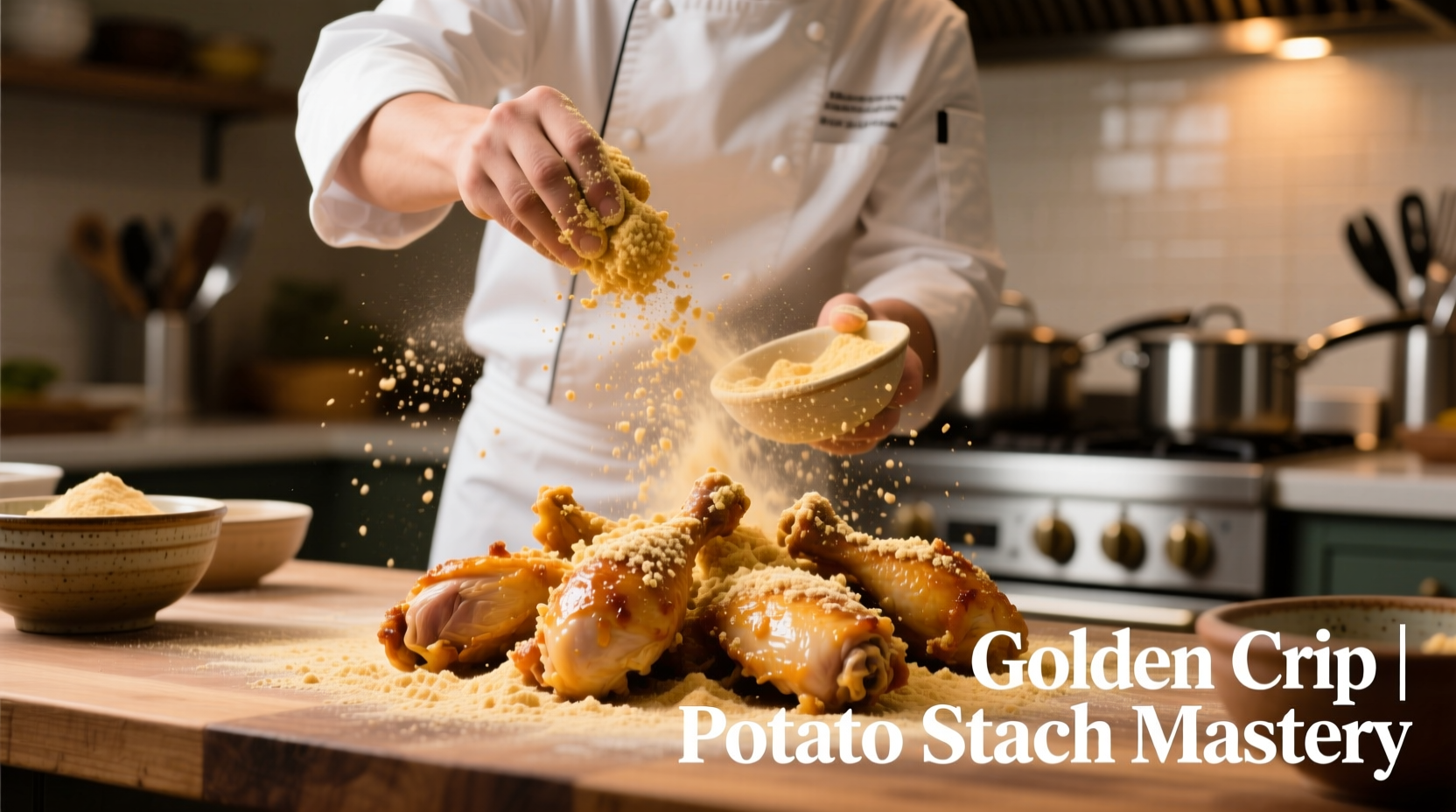Potato starch is a pure carbohydrate extracted from potatoes, valued for its neutral flavor, high thickening power, and ability to create exceptionally crispy coatings. Unlike cornstarch, it maintains viscosity when heated to boiling point and produces a crystal-clear gel, making it ideal for applications where appearance and texture are critical.
Why Potato Starch Outperforms Other Thickeners
Professional chefs and food scientists consistently rank potato starch as the premier thickener for high-heat applications. Its unique molecular structure allows it to withstand temperatures up to 203°F (95°C) before breaking down—significantly higher than cornstarch's 140°F (60°C) limit. This thermal stability makes it perfect for boiling sauces, soups, and stews where other starches would lose thickening power.

Key Culinary Applications
Understanding where potato starch shines helps maximize its potential in your kitchen:
Frying Perfection
For the crispiest fried foods, use a 1:1 ratio of potato starch to flour in your coating. The starch's low gelatinization temperature creates an instant crust that seals in moisture while absorbing minimal oil. This technique produces noticeably lighter, crunchier results than cornstarch alone—especially crucial for tempura and Korean fried chicken.
Gluten-Free Baking
When combined with rice flour (use 25% potato starch in your blend), it improves moisture retention and creates a tender crumb structure. Unlike cornstarch, it doesn't impart a chalky texture to delicate cakes and pastries. For best results, always combine with a binding agent like xanthan gum.
Sauce and Filling Mastery
Mix 1 tablespoon potato starch with 2 tablespoons cold water before adding to hot liquids. It thickens at lower temperatures than cornstarch, preventing lumps while creating a glossy, transparent finish ideal for fruit pie fillings and Asian stir-fry sauces. Never add directly to hot liquids—this causes clumping.
| Thickener | Thickening Temp | Gel Clarity | Freeze/Thaw Stable | Best Applications |
|---|---|---|---|---|
| Potato Starch | 140°F (60°C) | Crystal clear | Excellent | Frying, pie fillings, clear sauces |
| Cornstarch | 140°F (60°C) | Slightly cloudy | Poor | Gravies, puddings |
| Tapioca Starch | 140°F (60°C) | Clear with shine | Good | Doughs, bubble tea |
| Arrowroot | 140°F (60°C) | Clear | Fair | Fruit sauces, dairy-free |
When Potato Starch Isn't the Best Choice
Despite its advantages, potato starch has specific limitations you must understand:
- Acidic environments—loses thickening power below pH 4.0 (avoid in lemon pies or tomato sauces)
- Long cooking times—extended simmering causes breakdown (add during final 2 minutes)
- Dairy combinations—can create slimy texture in milk-based sauces (use cornstarch instead)
Substitution Guide: When You're Out of Potato Starch
Use these professional conversion ratios when substituting:
- For frying: 1:1 with cornstarch (but expect slightly less crispiness)
- For pie fillings: 1.5x cornstarch (potato starch is 50% more powerful)
- For gluten-free baking: Equal parts tapioca starch (but texture will be chewier)
Never substitute potato flour for potato starch—they're completely different products with distinct properties.
Storage Secrets for Maximum Shelf Life
Potato starch degrades faster than other starches due to residual potato proteins. Follow these storage guidelines from the USDA's FoodKeeper database:
- Store in airtight container away from light and moisture
- Keep below 70°F (21°C) for optimal stability
- Use within 6 months for best performance (vs. 12 months for cornstarch)
- Discard if clumping occurs or odor changes (sign of hydrolysis)
Historical Context: From European Pantry Staple to Global Essential
Potato starch production began in 1820s Germany after the potato's widespread adoption in European agriculture. According to the International Starch Institute, its culinary use expanded globally through three key phases:
- 1830-1900: Primarily used in Central European baking and laundry
- 1900-1980: Industrial production scaled for textile and paper industries
- 1980-present: Culinary renaissance driven by gluten-free movement and Asian cuisine popularity
Professional Tips for Perfect Results
- Always make a slurry—mix with cold liquid before adding to hot dishes
- Never boil after adding—simmer gently to prevent breakdown
- For double-crisp frying—use 50/50 potato starch and cornstarch blend
- Revive stale coatings—sprinkle with potato starch before reheating











 浙公网安备
33010002000092号
浙公网安备
33010002000092号 浙B2-20120091-4
浙B2-20120091-4